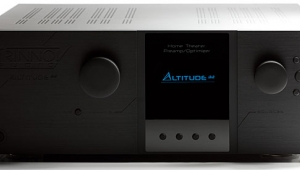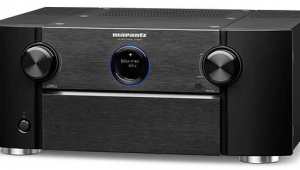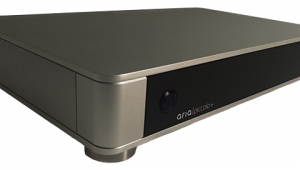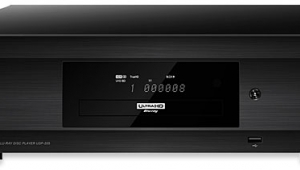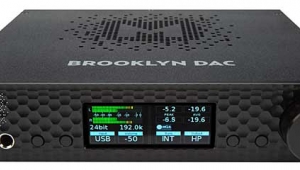| Columns Retired Columns & Blogs |
Music in the Round #40
It seems only yesterday, but it's been 10 years since I began using the original Paradigm Reference Servo-15 subwoofer in my system. It was good then, and it still is, although a lot around it has changed. At first, I hooked it up via Paradigm's X-35 crossover, then via a Technics SH-AC500D surround processor, and finally to the subwoofer/LFE outputs of the various preamplifier-processors and A/V receivers I've used. Y'see, the Servo-15 is just a powered sub. It has an amp and a level control, but no crossover, no channel mixing, and no phase control. Just plug in the signal and it plays it. Along came in-room response correction from Audyssey, Anthem, Velodyne, etc., and the Servo-15 became an even better sub. For music, it entirely satisfies my needs.
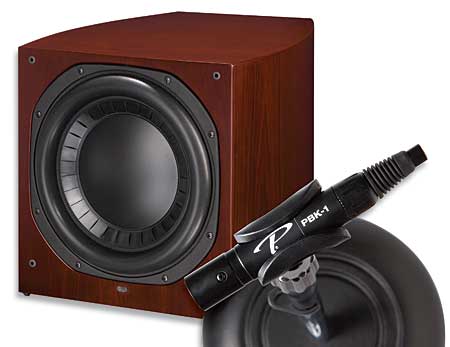
So why am I reviewing Paradigm Reference's new Studio SUB 15? Well, aside from my obligation to you, the readers, I was curious about how Anthem has adapted its ARC software to subwoofer EQ in the form of Paradigm's Perfect Bass Kit (PBK-1), how the art of subwoofing has advanced in the past decade, and how two separately placed subs will perform.
The Studio SUB 15 ($2500) differs in several ways from the Servo-15 ($1500 when reviewed by Larry Greenhill in Stereophile in August 1999, since discontinued). First, it lacks a servo system, due, I suspect, to the current availability of DSP control of the driver that's more secure and subtle than accelerometer-based feedback control. Second, two 850W class-D amps replace the Servo-15's single 400W discrete amp. While both subs sport 15" cones, the diameter of the SUB 15's voice-coil is 76mm compared to the Servo-15's 50mm. In fact, the new drive-unit is of far more complex construction, from its 35-lb ceramic-ferrite magnet structure to its dual spiders and aluminum shorting ring. Third, though similar in size to the Servo-15, the SUB 15 is substantially heavier (114 vs 90 lbs), yet more attractive due to its outrigger feet and tapered sides. The two models' bass extensions differ little: the Servo-15 is rated down to 14Hz, the SUB 15 down to 12Hz.
Entirely new in the SUB 15 are its ability to accept balanced (XLR) as well as unbalanced (RCA) input signals, a trigger input in addition to auto on/off, an adjustable low-pass filter (35–150Hz plus bypass), a phase adjustment (0–180° continuous), a soft blue power-indicator light, and a USB port. Both models include a level control.
The SUB 15's extra 24 lbs make a big difference—I needed help to carry it into the house and position it in the listening room. My Servo-15 was already occupying the space between the listening sofa and the left rear speaker, so with help, I put the SUB 15 in the front of the room, between the center- and right-channel speakers. Later, I swapped the subs—much easier said than done. I used the Paradigms individually and together, but delayed using the Perfect Bass Kit until I'd gotten a good impression of what the SUB 15 itself was about. Of course, that meant a fair amount of cable swapping and rerunning of Audyssey MultEQ Pro, but I wanted to keep as level a playing field as possible.
In either location, and without any EQ, the SUB 15 had a flatter, more extended bass response than the Servo-15. The unequalized in-room response showed that the Servo-15's –3dB point was just above 20Hz, the SUB 15's at 15Hz. Using the SVSound AS-EQ1 or the Audyssey SEQ room-equalization programs, each sub's response was corrected to be flat to about the same indicated frequencies, with steep rolloffs below those figures. Subjectively, however, the SUB 15 more readily "disappeared" as a discrete source of sound, both when used for movies' Low Frequency Effects (LFE) channel, which is low-pass–filtered at 120Hz, and for rerouted left/right channel bass with a crossover up to 80Hz. This suggests that the new SUB 15 has a smoother upper end—if you can call a ceiling of 100Hz the "upper end." It also suggests that the SUB 15's driver and cabinet contribute fewer spurious resonances that might draw a listener's attention away from a given sound's intended apparent source.
Now for the Perfect Bass Kit PBK-1 ($250), an adaptation of the formidable Anthem Room Correction (ARC) system used in Anthem's Statement D2 processor. The PBK-1 looks exactly like the ARC kit, and works similarly. One need only connect one's PC, via USB cables (provided), to the mike (provided) and to the SUB 15, and launch the application. The PBK-1 asks two questions: how many mike positions you'll use (up to 10), and what upper frequency limit (160–250Hz) you want for the correction. I specified my usual choice of six mike positions: position 1 at the listening position, 2 and 3 to either side of that, and 4–6 about 3' in front of positions 1–3. Then you hit Measure: the PBK-1 burps the sub, then prompts the user to move the mike to the next position. A little calculation, and the display graph shows three traces: the measured in-room response, the target response, and the calculated response with the implementation of the PBK-1's Infinite Impulse Response (IIR) filters.
The SUB 15's response, as measured by the PBK-1, showed considerable variation throughout the range, with a large peak at 26Hz (my room's axial mode) and a deep null at 35Hz (a major transverse mode), along with their attendant harmonics. The low frequencies extended strongly to 15Hz. The unmodifiable target curve was pretty flat from the low-pass point of 250Hz down to 20Hz, with a mild rolloff below that. The calculated result very closely tracked the target result. I experimented with the only variable available, the low-pass frequency, but found that leaving it at 250Hz gave the flattest result. All that remained was to click the mouse and upload the correction from the PBK-1 to the SUB 15. The entire measuring and adjustment procedure took less time than unpacking and setting up the mike and stand.
- Log in or register to post comments


